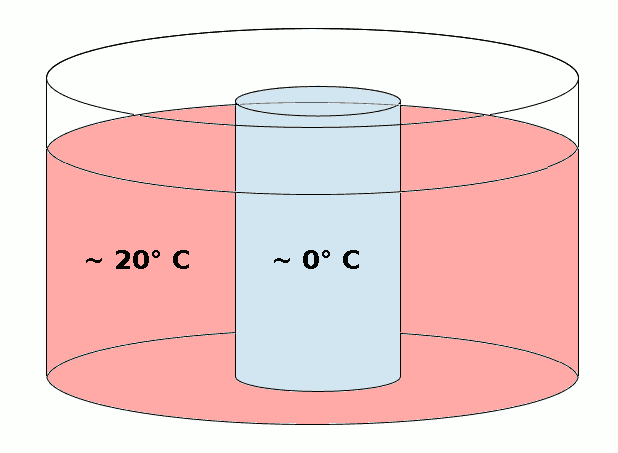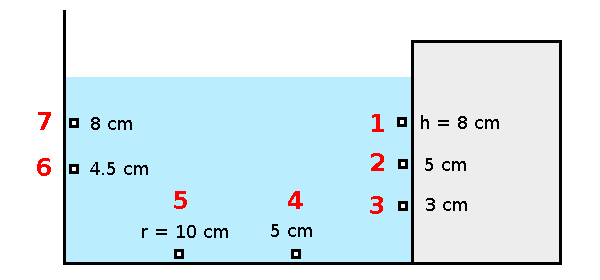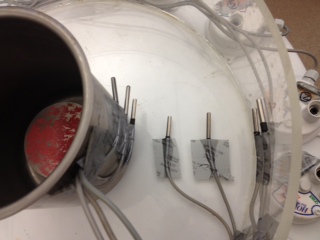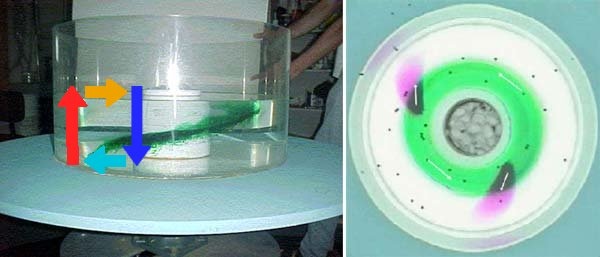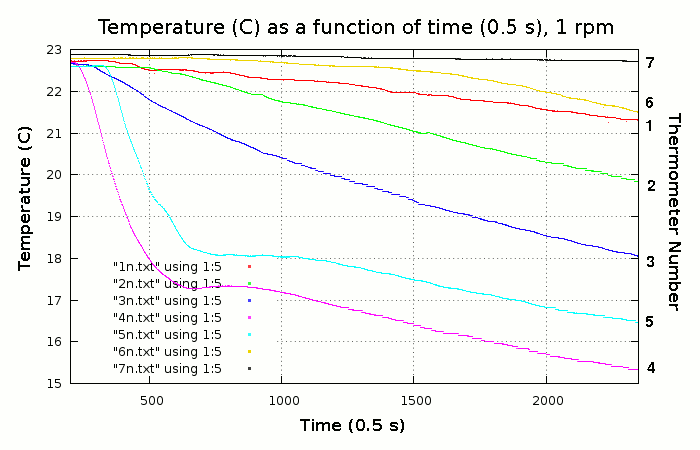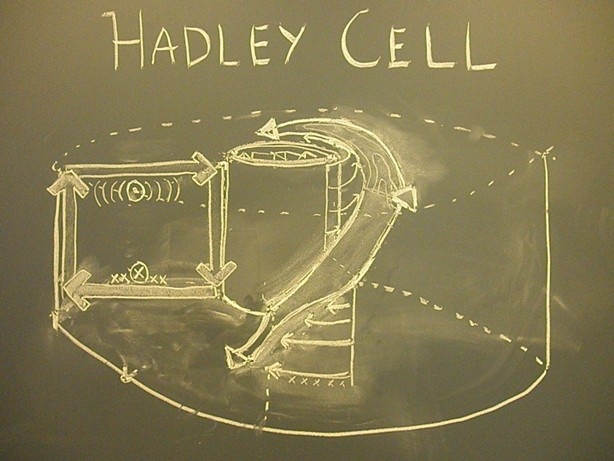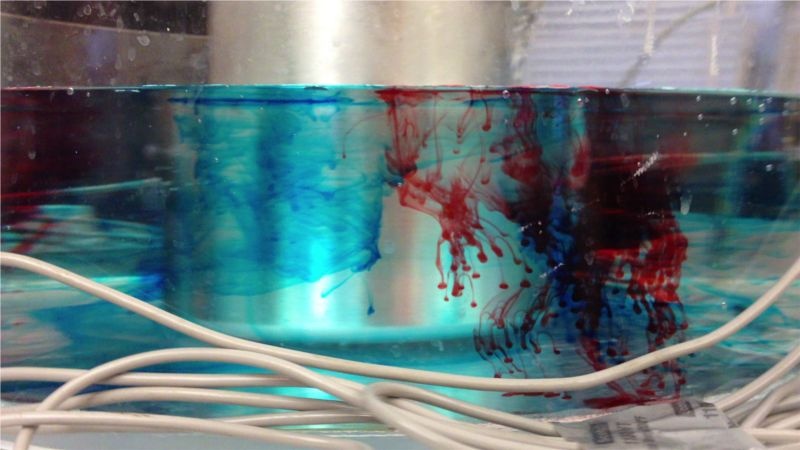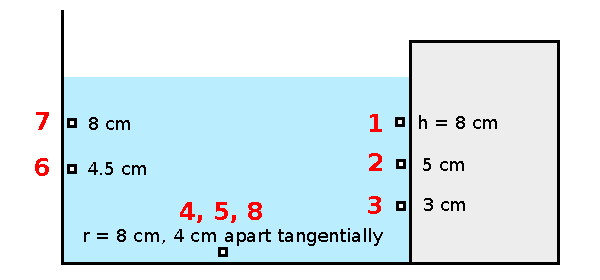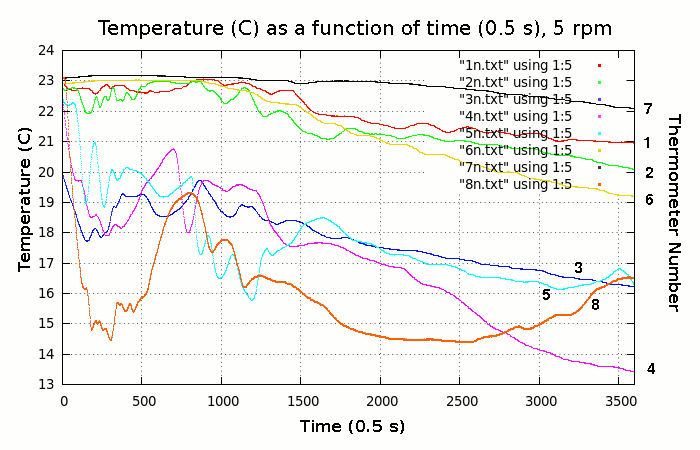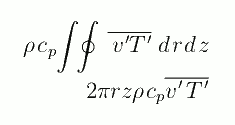A Laboratory Analogue of the General Circulation of the Atmosphere
Laboratory Analogue
by Chris Klingshirn
This section describes the design of a laboratory experiment to simulate the large-scale general circulation of earth's atmosphere and compares the results of the experiment to the predicted behavior.
This section describes the design of a laboratory experiment to simulate the large-scale general circulation of earth's atmosphere and compares the results of the experiment to the predicted behavior.
Background
It is observed that the mean differences in near-surface temperature and outgoing radiation between the earth's equatorial and polar regions are significantly smaller than the difference in incident solar radiation between the tropics and the poles. This observation implies the existence of a net equator-to-pole transport of energy [1]. One of the mechanisms responsible for this energy transport is the atmospheric general circulation, a net poleward transport of warm tropical air into colder polar regions.
Experimental Design
We attempted to duplicate the mechanism and the effects of the general circulation by constructing a physical analogue in the laboratory. The dominating feature of the general circulation is a radial temperature gradient in a rotating frame of reference. In the experiment, a rotating tank of warm water simulated air on the rotating earth, and a centrally positioned metal bucket containing ice and cold water simulated the cold pole:
The apparatus consisted of a rotating cylindrical tank of warm water, representing warm equatorial air, with a cold metal bucket of ice-water at the center to represent the cold polar air.
Thermometers were placed in the tank at two radii and at several heights on the inner and outer walls:
Results
Hadley Circulation Regime (1 rpm)
The tank was set rotating at a relatively slow 1 rpm, for a Coriolis parameter f=0.21, to simulate the dynamics of Hadley circulation in the earth's equatorial regions where f is small compared to higher latitudes (on a sphere, f=2Ωsinφ, where φ is latitude).
We observed an inward surface flow, which had positive tangential velocity, and outward near-bottom flow with negative tangential velocity:
Adapted from http://paoc.mit.edu/labguide/circ_exp_slow.html
Measurements showed a radial temperature gradient that was approximately constant in time:
Expected Behavior
The radial temperature gradient causes radially-asymmetric convection, with water near the cold center cooling, becoming more dense and sinking. This flow leads to radial motion towards the center at the surface and away from the center at the bottom of the tank. This radial flow is distorted tangentially as a consequence of the conservation of angular momentum, which is proportional to the square of the distance to the center of rotation; as a particle near the edge moves inwards, it acquires a positive tangential component to enforce angular momentum conservation, or similarly, a negative tangential component if the particle is moving radially outwards:
_From http://paoc.mit.edu/labguide/circ_exp_slow.html._
The closeness of the analogue behavior to the predicted behavior can be determined quantitatively via the thermal wind relation:
Using dT/dr=3.3 C/m at the surface and known constants, one may compute compute du/dz=0.0314 cm/s/cm. Given a depth of 12 cm and assuming that the velocity at the bottom is negligible, this gradient implies u=0.38 cm/s at the surface, which is close to the 0.46 cm/s measured by tracking a paper dot placed on the surface with a camera mounted in the rotating frame.
Unstable Eddy Regime (5 rpm)
After the simulation of Hadley circulation, the experiment was conducted again with a tank rotation rate of 5 rpm to simulate the general circulation at higher latitudes on the earth.
The flow became unstable and was no longer radially symmetric, but consisted of several eddies:
These eddies are analogous to cyclonic weather systems seen in earth's mid-latitudes.
The thermometers were re-configured and one more was added, for a total of eight. Three were arranged on the bottom at 4-cm intervals on the radial arc for r=8 cm:
Unlike the predictable temperature profiles of the 1 rpm trial, the temperature profiles in the 5 rpm case are pseudo-periodic with amplitude ~0.5 C and exhibit large fluctuations:
The oscillatory nature of the temperature curves is the result of eddies, each with a warmer and a cooler component, repeatedly passing over the thermometers.
Energy Flux Toward the Cold Pole
One can compute the efficiency of the eddy-induced heat transport by comparing the mean thermal power required to melt the ice in the bucket with an integrated thermal power flux computed from measurements of velocity and temperature anomalies in the tank.
Given a mass of ice of 0.992 kg which melted in 1740 s, and the latent heat of ice, one finds that a mean power of 190 W contributed to melting the ice.
The mean power flux carried by eddies across a specific radius within the tank may also be computed. Integrated in the vertical and around the tank,
where v'T' represents the product of temperature and velocity anomalies. Using a mean surface velocity of 0.218 cm/s at a radius of 0.106 m and assuming a linear velocity increase in height from the bottom, an estimated mean temperature anomaly of 0.5 C, and a depth of 0.1 m, one obtains a mean power of 152 W being transported towards the bucket of ice by eddies. This value is plausible because it is slightly lower than the 190 W power required to melt the ice, with the difference likely being accounted for by thermal power from the warm air in the laboratory. It is clear that the eddy heat flux is quite efficient at transporting heat from the edge of a rotating system towards the center.
Conclusion
The tank analogue successfully modeled both the Hadley circulation and eddy circulation regimes of the atmospheric general circulation. We were able to simulate the latitude dependence of the earth's Coriolis parameter by adjusting the rotation rate of the tank, with a higher rate to simulate the greater Coriolis parameter at higher latitudes. The Hadley simulation reproduced both the meridional and zonal structure of the Hadley circulation on earth, and the eddy simulation reproduced the instability of cyclonic weather systems.
